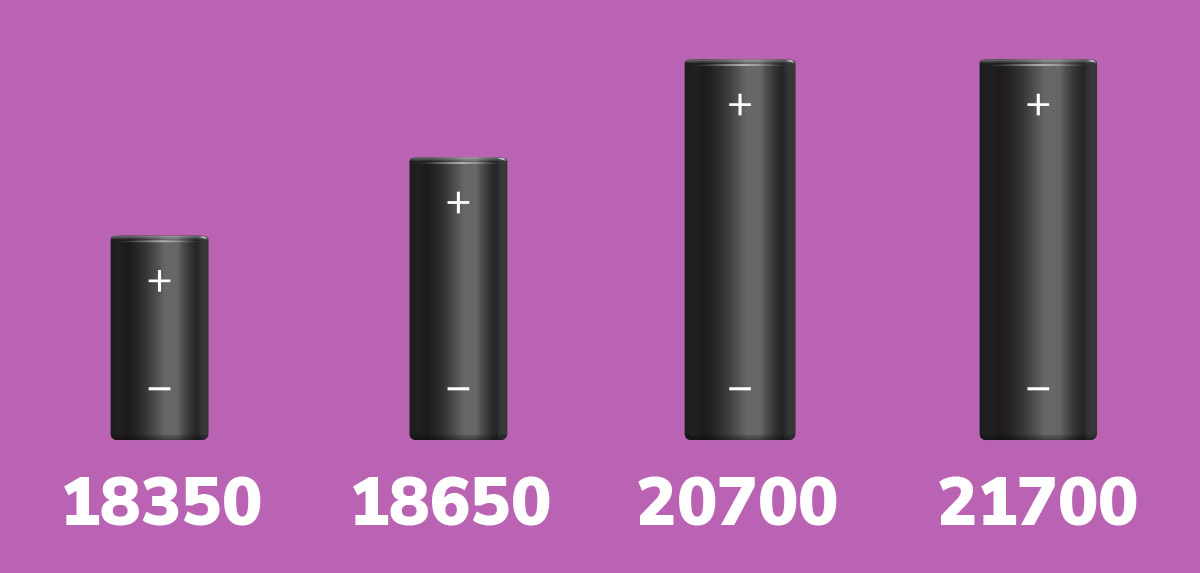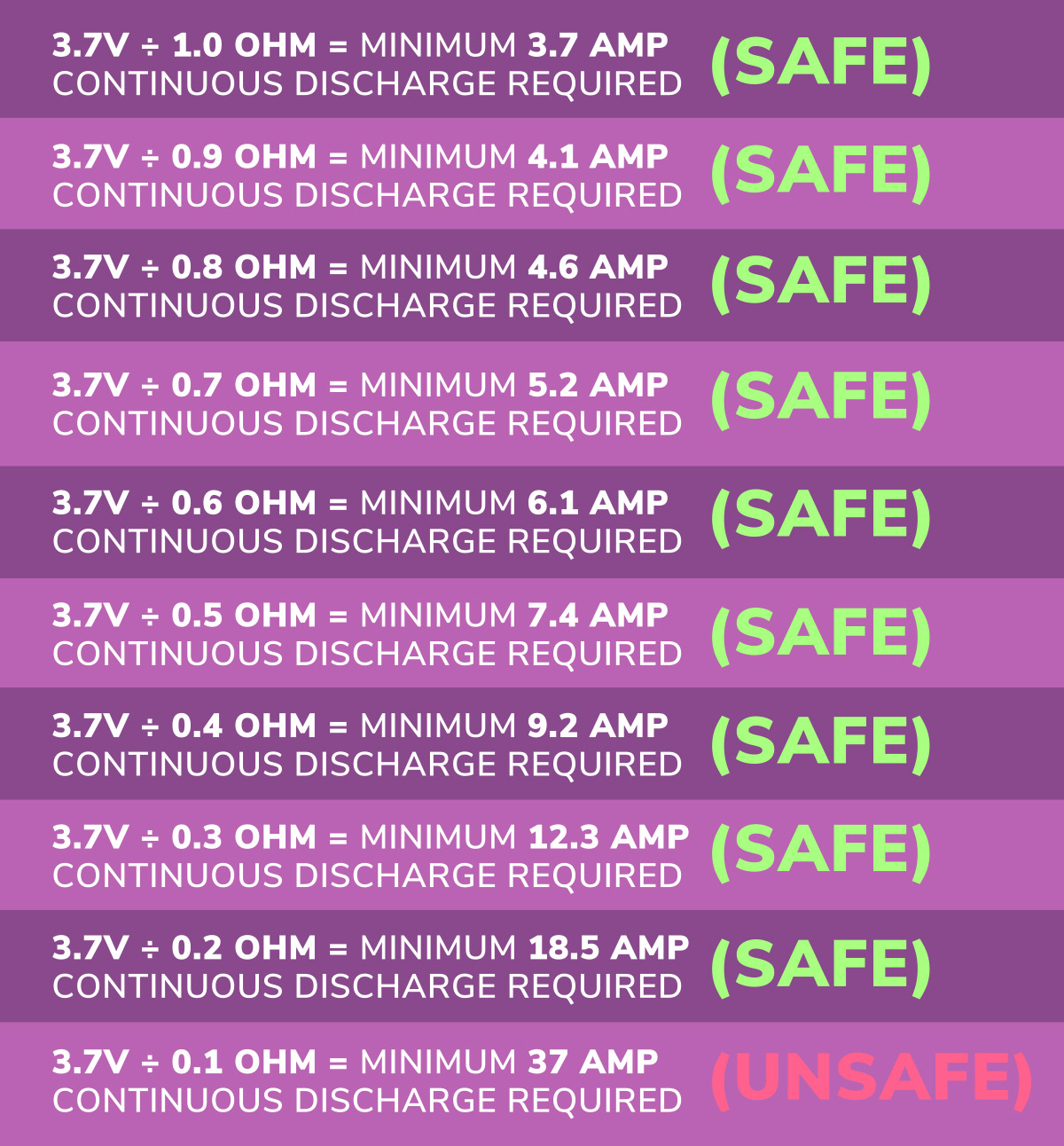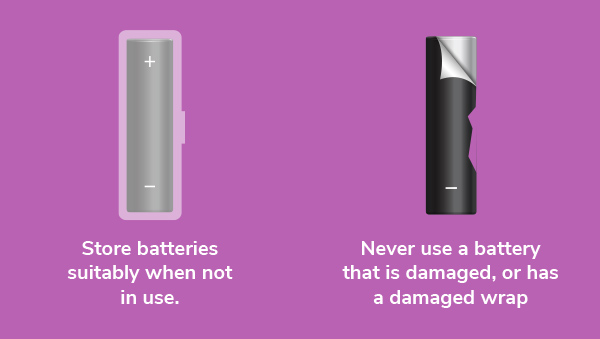A Beginners Guide To Vape Batteries
WHAT IS A VAPE BATTERY?
Vape batteries are specially designed external power sources, manufactured specifically for vape hardware. They are a key component in vaping, powering the device to heat the e-liquid held in your tank, which is how vapour is produced. Removable vape batteries were created to address a rather common problem involving built-in batteries. A traditional vape starter kit will most often use a built-in battery. The issue is, when it runs out of charge the device itself will have to be recharged, rendering it unusable temporarily or at least tethering you to a charge point. With a removable vape battery, you have the option of simply replacing the spent battery with a fully charged replacement. This extra element of convenience proved to be a hit. Now to keep up with growing demand manufacturers are creating custom batteries to suit vaper’s needs. With plenty of options available you’ll need to be sure that you’ve picked the one best for you. Throughout this guide we’ll be covering the basics of battery types, which suits the device you’re using, whilst touching on the all-important topic of battery safety.
HOW DOES VAPE BATTERIES WORK
A rechargeable/removable vape battery works like the standard batteries used in your home and in the majority of electrical appliances. They’re generally larger in size, but the science is the same. You can’t catch and store electricity, batteries contain chemicals that when activated produce energy, which is then converted into power by equipment like a vape kit.
WHAT ARE THE DIFFERENT KINDS OF BATTERY

Batteries are most commonly grouped in relation to their size, the first two digits correlate to the width and the proceeding three, to height (these are all recorded in millimetres). Different not just in size, 18650, 20700 and 21700 vape batteries will also have different abilities when it comes to power output, capacity and current.
As a rule of thumb, the larger the battery, the higher the capacity and output.
High Drain And Large Capactiy
By changing the chemical makeup of a battery, manufacturers can create versions that suit your vaping needs. For some of you, a long battery life will be the most important factor of picking a vape battery. If this is the case, you’ll need to be looking for a model with a high milliAmp per hour capacity, for example, 3000mAh. This number records how long the battery can be discharged until it runs out of charge entirely. As mentioned previously, there is a trade-off. By ensuring a high capacity, you will have to sacrifice continuous discharge output. What this means is that it will take longer for the battery to generate power. If you’re planning to vape at lower wattages (under 40W) this really won’t present much of an issue. If you’re looking to vape at high wattages, you’re going to want to invest in a battery with a higher Amp discharge. With the most common removable battery being the 18650 model, we’ve included some helpful examples for picking the best battery to suit your style.

Pulse VS Continous Discharge
We’ve mentioned previously the idea of continuous discharge rate. Some battery manufacturers also record what is known as the pulse discharge rate. While the pulse discharge is in no way an inaccurate indication of your battery’s performance, it doesn’t reflect the battery’s true characteristics. Pulse discharge is the measurement taken of a fully charged battery’s output for a very short amount of time. Batteries will experience a drop in current as their charge diminishes through normal use. This is why when picking a battery based on it’s mAh capacity and Amp output, you should always look to the max continuous discharge rate for the most accurate reading. This differentiation between max and pulse is important when using a regulated device, but even more so if you plan to use an advanced, mechanical/unregulated device.
INTRODUCTION TO OHM'S LAW
Now that we’ve talked a bit about capacity and current, it’s a good idea to introduce Ohm’s Law. Ohm’s Law expresses the relationship between your power source and the coils found in you tank or rebuildable atomiser - an understanding of the relationship is important if you plan to use removable batteries.
Ohm’s Law is expressed as I = V / R
(I) is Current, (V) is Voltage and (R) is the Resistance of your coil/s. By dividing the Voltage of your battery against the resistance of your coils (recorded in Ohms), you can work out exactly what Amp output is required. When using a standard regulated device (a device that includes a regulatory chipset) this ensures a better and safer vaping experience. When using an unregulated/mechanical device, the equation can essentially save your life.
Ohm’s Law and Mechanical Mods
Unregulated/mechanical devices are only ever recommended for the most experienced vapers, and for good reason! They contain no fallback or safety mechanisms. Pushing the button on an unregulated devices will complete a rudimentary circuit, which sends the maximum power a battery can produce straight to the atomiser you’re using.
To understand which battery you need to be using, we’ve included a few examples. All Ohm’s Law calculations are based on a vape kit using a single coil and an 18650 battery with a 3.7V power output and a 20A continuous max discharge.

Remember to keep batteries at a good charge, this is because batteries will lose Voltage as their charge diminishes. Which in turn will directly affect the safety parameters.
If you’re looking for lowest resistance that your battery can handle (not recommended) then you can invert the Ohm’s Law formula to R = V / I. So, if you're using the same 18650 as before (3.7V, 20A), you can work out the lowest acceptable resistance, as below.
3.7V ÷ 20A = 0.185 Ohm (lowest possible coil resistance).
We can not express enough how much care you need when using batteries with a mechanical devices. Especially considering how batteries characteristics can change through use and over time.
WHAT BATTERY DOES MY VAPE DEVICE NEED?
Most manufacturers often recommend a battery type on the packaging or user manual, of a device or kit. It is however good practice to know just exactly what type of battery your vape kit is compatible with.
Sub Ohm
Sub ohm vaping traditionally necessitates vaping at a higher wattage, this is because coils that register below 1.0 Ohm will require more power to reach the point where they will heat your e-liquid. But when it does, you’ll experience far greater levels of vapour production. To support this vaping style, we recommend using a battery with a higher Amp output. This will help the device reach the higher power levels required at a faster rate.
Mouth To Lung
MTL (Mouth To Lung) vape devices, on the other hand, produce less vapour and generally work at lower wattages. This is to support a mouth to lung vaping style, wherein the user inhales vapour first into their mouth and then carries it into the lungs, before exhaling. This inhale action is much similar to the draw of a cigarette. As a lower power output is experienced, these types of kits will largely work best with a lower Amp output battery, which in turn will offer you a longer battery life.
Mechanical
There's absolutely no room for experimentation when it comes to picking the correct battery for use with an unregulated device. Before using a battery, perform the Ohm’s Law calculation to work out exactly what battery is going to best suit the coil you’re looking to employ. As a rule of thumb, when using a battery with a mechanical device, the higher the Amp output, the better.
BATTERY SAFETY
There’s more to battery safety than just Ohm’s Law. Proper battery care is key to a better and secure vaping experience. Here’s a rough breakdown of battery safety to help sustain a safer vaping experience.




Charging
Removable batteries will need to be recharged. It is possible to do so while they’re still inserted into your vape device, by plugging the charging cable into the port situated on the kit. We don’t recommend this however, as it takes longer whilst also reducing the overall lifespan of the batteries.
Wraps
The battery wrap is the coating around your battery, which serves to cover the conductive material of a battery, rendering it safe to use. A damaged wrap is not only unsightly, it also poses a danger to the user. We advise any batteries with damaged wraps to not be used in any circumstances, as it could lead to a nasty accident.
Connections
A lot of vape devices have the safety feature of reverse polarity protection, meaning the device won’t activate if batteries are inserted the wrong way. Saying this, it’s essential to always place your batteries in the correct way, especially if using a mechanical device. This is because they don’t have reverse polarity protection in mechanical mods, which means the battery will short circuit and vent, which can cause serious and fatal damage.
Temperature
Extreme temperatures when charging batteries can damage them severely so it’s important to always keep them at room temperature. If too hot, it can temporarily reduce the battery’s capacity whilst being too cold can permanently reduce the battery’s capacity.
Liquid
This one may seem like a no-brainer, but it’s worth reiterating to always keep batteries (when charging or not) away from liquid of all kinds. There’s a strong chance of the battery exploding when coming into contact with certain liquids including water, not to mention rendering the batteries unusable ever again.
Storage
Proper protection and storage of vape batteries is essential and will help keep your batteries safe and in a usable condition for longer. When not in use, we recommend that you remove the batteries from your vape device, particularly when travelling, and store them in a dedicated battery case. Unprotected batteries that come into contact with conductive materials, such as loose change and keys, can not only lose charge but potentially short circuit, causing them to explode and potentially injuring you and others around you. As well as this, it’s always advised to store batteries in a cool, dry location. Exposure to extreme heat and cold can cause a reaction in your batteries which will reduce their charge in the short term. Long term exposure can reduce the overall capacity of your battery, potentially causing them to react violently, which again could potentially cause harm to yourself and others.
SHOULD I USE REMOVABLE BATTERIES IF I'VE JUST STARTED VAPING?
It’s not the case that you shouldn't use a removable vape battery if you’ve just started vaping, it’s more the fact that you probably won’t need to. More often than not, when you’ve just started vaping you’ll be using a simple, mouth to lung vape kit, which more often than not will utilise a built-in battery. That said, some basic starter kits employ removable batteries, so brushing up on some basic battery safety knowledge is good practice.
WHEN DO I NEED TO REPLACE MY BATTERY?
Most removable vape batteries will need to be replaced between 300 - 500 charge cycles or after eighteen months. If your vape battery shows signs of degradation, or if the wraps covering the batteries are worn (or even slightly damaged), it poses a danger to the user. It’s always recommended to not use damaged wraps in any circumstances as it could lead to a nasty accident. The biggest indicator as to when it’s time to replace your battery, is when you notice a drop in performance. For example, if your battery stops holding its charge, or doesn’t offer the same power output - then it’s time to replace your battery.
